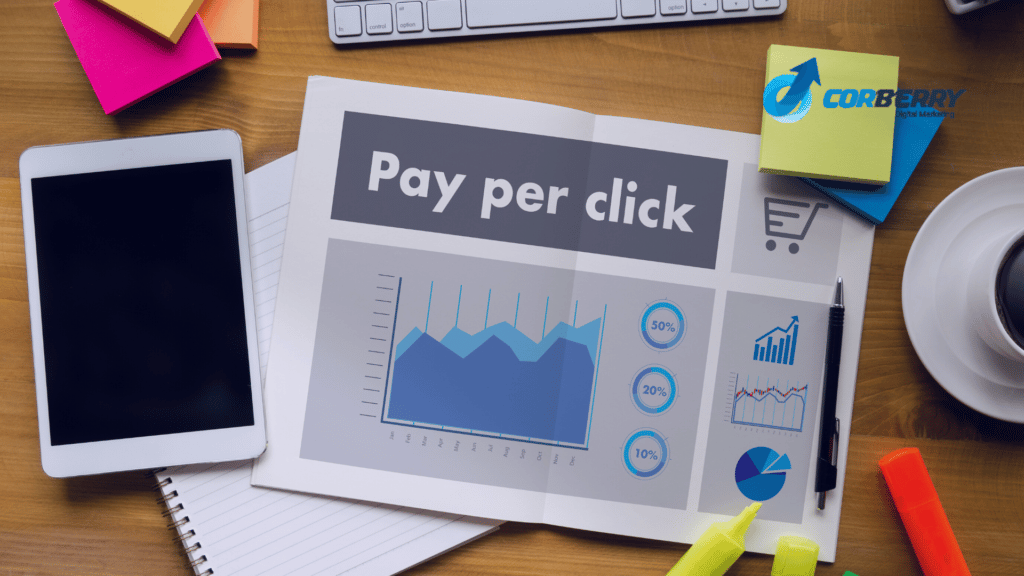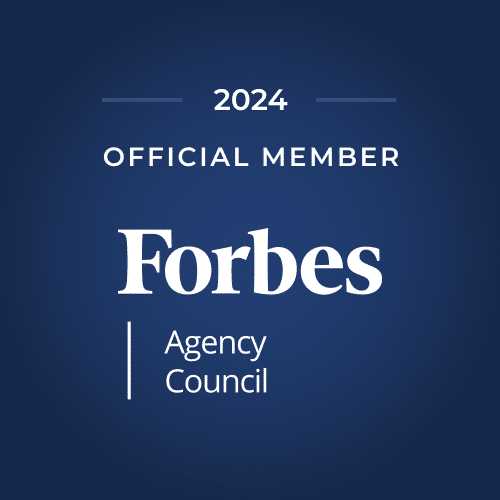
The PPC bid strategy is one of the most complicated phases of PPC marketing. The first step before considering your strategy is to set a clear goal to make the best use of your PPC budget.
Google Ads is a powerful tool that helps you set a budget and adjust your bids according to your goals to help you generate better returns. In this article, we will focus on the bidding strategy which clearly explains the type of bidding you will use in the campaign. It also focuses on tips for PPC bid strategies that will improve your campaign.
Related reads
How Important is CPM in Advertising?
How to Optimize and Track Marketing Workflow?
What Are PPC Bids?
A PPC bid features in Google Adwords. It is a bid you place in a pay-per-click (PPC) auction to help advertisers secure ad space at the top of the search results. There are various factors affecting the PPC bid process. These include:
- The eminence of the link in SERPs.
- Budgeting is also one of the important factors that affect PPC bids as many advertisers have only a limited budget for their marketing.
- The bidding process itself tends to favor high bids which results in controversy among advertisers.
Google Ads Bidding Strategies
Bidding strategies default to two sections, automated bidding and manual bidding strategy. A bid strategy sets the bid algorithmically for each auction according to the target input.
Google intends to make advertisers choose one of its automated bidding methods rather than letting advertisers set their bids manually. Before knowing the relevant bidding option suitable for your business, it’s best to get a clear understanding of automated bidding and manual bidding strategies.
Automated Bidding Vs Manual Bidding Strategy
| Automated Bidding Strategy | Manual Bidding Strategy |
| Automated bidding strategy simply means that the bidding amount (ie. Max. CPC) is set by Google. This is also known as smart bidding as it uses algorithms to optimize bids. The automated bidding strategy section includes: Maximize clicks Target CPA Target ROAS Maximize conversions Maximize conversion value Target impression | In a manual bidding strategy, the advertisers set the maximum bidding amount(ie. Max. CPC) for every keyword on the Google Ads platform. This process requires a high degree of PPC knowledge to drive the expected return on investment. The manual bidding strategy section includes Manual CPC |
These strategy classifications can help you determine which strategy is best for you depending on what you want to focus on when you bid: clicks, impressions, or conversion.
| Tips:If you are new to Google Ads or starting a new business with a minimum budget, using manual bidding is the ideal choice you can make before exploring new advanced options. |
Now it’s best to look over the various budding strategies.
5 Bidding Strategies for Conversions
Smart bidding lets you focus on the conversions and allows your customer to make direct action on your site.
1. Target Cost per acquisition(CPA)
With a target CPA, you can target a specific cost for each conversion. Google Ads sets your bids automatically to drive as many conversations as possible within your CPA goal.
| Tips:Set your goal in such a way as its aim essentially is to get your target CPA as low as possible to get as much return as possible. When optimizing for a target CPA, you must ensure that the bid strategy has enough data. You will need 10-15 conversions in the last 30 days to have eligibility in this bid strategy. Give your bid strategy the time to settle until then slightly increase the target. You can reduce them over time accordingly to ensure you are not limiting bids. |
2. Target return on ad spend(ROAS)
With target ROAS, you can target a specific conversion value and Google Ads sets your bids automatically to drive the higher conversion value that you set in your campaign. It focuses on conversion value over volume.
This bid formula reviews the conversion rate, Average Order Value (Price) and your target ROAS. The system then takes these inputs to determine bid amount. If Target ROAS is met and conversion is high, then Google bids up to get more clicks and sales. If the inputs are below target, then Google bids down your placement to hit the ROAS target.
| Tips:Google will recommend a target ROAS amount according to the historical data, which is a minimum of 20 conversions in the past 45 days. This process continues once you apply the bid strategy to the campaign. While commencing your business, you may set your target slightly lower and you can increase it accordingly over time to ensure you are not limiting efficiency. |
3. Maximize conversions
The maximize conversion strategy drives as many conversions as possible according to the historical campaign performance within your budget regardless of value or cost per lead. You would need at least 15-30 conversions in the last 30 days before changing to this bidding strategy.
| Tips:Campaigns using the maximize conversion strategy are on their budget and therefore it is essential to ensure the optimum working of the bid strategy by keeping a check on the conversion tracking. |
4. Maximize conversion value
Maximizing conversion value drives the most revenue possible within your budget. This may choose to bid higher for auctions that would result in greater conversion value than auctions with lower conversion value. When your Google campaign has enough historical data, this period serves as the best time where you can change it to maximize conversion.
5. Enhanced CPC
The enhanced CPC helps you get more conversions from manual bidding. Enhanced CPC is a combination of manual bidding with smart bidding strategies. This optional feature in the manual CPC can help you increase conversion and get more value from your budget while maintaining your cost per conversion.
Bidding Strategies for Clicks
Focusing on clicks is best for you if you wish to generate more traffic to your website.
1. Maximize clicks
The maximum clicks automated bid strategy that drives as many clicks as possible within your PPC budget. It works in such a way that it allows you to set the budget and the Google Ads system automatically sets your maximum CPC accordingly to bring volume by focusing more on clicks over conversions. This is one of the simplest ways to bid for clicks.
| Tips:As the maximize clicks bid strategy focuses on click-over conversion, it is not suitable for campaigns that have profitability goals. |
2. Manual CPC
Manual CPC differs from the automated bid strategy. Manual CPC allows you to set manual bids for clicks of different bids in each ad group, keywords, and placements. You can determine your manual CPC by multiplying your maximum cost per conversion by your conversion rate.
| Tips:It is essential to regularly monitor the progress of the bid strategy manually. |
Bidding Strategies for Impressions:
If you focus on visibility, then the following bid strategies can help you increase visibility.
1. Target impression share
Target impression share focus on impression on the Google SERPs. It targets a specific percentage of available impressions. This depends on where you want your ads to display,
- Absolute top of the page
- Top of the page
- Anywhere in Google SERPs.
| Tips:Unlike other bid strategies, this focuses on creating awareness, which results in minimum profitability. Therefore it is best to set your bids lower at the initial period and over time raise your percentage by 50% maximum. |
2. Viewable CPM
Viewable CPM is a manual bidding strategy where you set how much you are willing to pay for every thousand viewable ad impressions. It is an emerging metric that determines how many people see your ads on the webpage. One of the main advantages of vCPM is that you only pay for impressions it measures as viewable.
| Tips:For winning these types of impressions, using a higher vCPM bid than your CPM bid is often more effective. |
3. Target CPM
Target CPM is a bidding strategy that allows you to set an average for how much you are willing to pay for every thousand impressions. If you are targeting to build a unique reach or improve ad revenue then target CPM is the best choice. Target CPM focuses on the minimum price across various impressions and increases dynamic floor pricing.
4. CPM
CPM (Cost per mille) is a bid strategy where you must pay for every thousand impressions an ad receives on YouTube or Google Display Network. CPM is a way to measure marketing expenses for large numbers of impressions. You can determine the total price you pay in a CPM by multiplying the CPM rate by the number of CPM units.
5. Cost per view (CPV)
Cost per view is a bidding strategy where you pay for every video view and other video interactions. CPV counts each view when a viewer watches 30 seconds of your video at maximum. You can determine the CPV by dividing the cost of an advertisement by the total number of views.
| Tips:If your main goal is to make people visit your webpage, then you can focus on clicks. If your main aim is to maximize brand visibility, then using target impression is ideal. |
Tips to Remember
- While approaching bid strategy, you must make sure you have decent historical conversion data.
- Ensure your tracking is accurate and the conversion you are optimizing is accurate.
- Ensure Google has enough data by feeding your bid strategy with relevant information.
- Ensure to set the Target CPA and target ROAS in a manner that will match your historical performance.
- Ensure to set minimum and maximum CPCs.
- Allow your bid strategies to settle to have them work better. However, it is best not to change them frequently.
- The bid strategies are constantly changing, hence you must regularly analyze them.
Frequently Asked Questions
1. What are the main factors that can affect PPC bidding?
Keyword bids, competition, and quality scores are some of the main factors that affect PPC bidding.
2. How can I improve my PPC conversion rate?
You can improve your PPC conversion rate by the following:
- Improve your Ad quality score.
- Monitor and keep a check on your current PPC conversion rate.
- Choose the right keyword.
- Remove negative keywords.
3. How is the CPC bid calculated?
CPC is calculated by dividing the total cost of your clicks by the total number of clicks.
Suggested reads:
A Complete Guide to Optimize Google Ads in 2022
9 Facebook Ad Mistakes You Should Not Make
Wrapping Up
If you manage to do well with bid strategies, then they are capable of driving great success for your business. You must provide the strategy with reliable relevant information to give the best-expected results. By optimizing the PPC bid strategy, you can improve your business to achieve better results.
If you wish to learn more about bid strategy let us know, we would love to hear from you.


